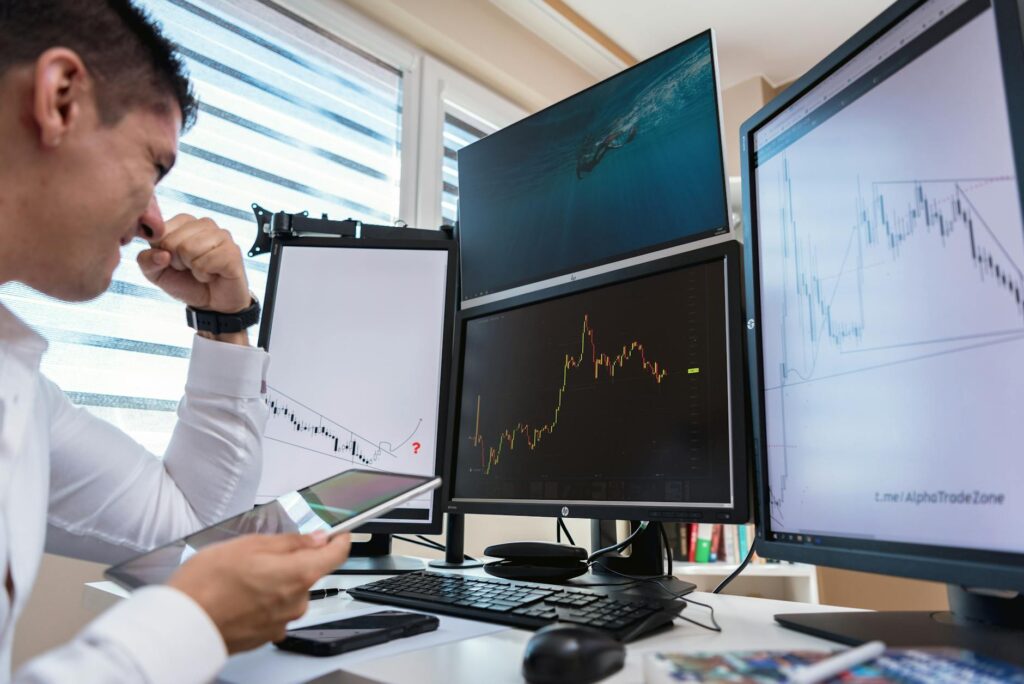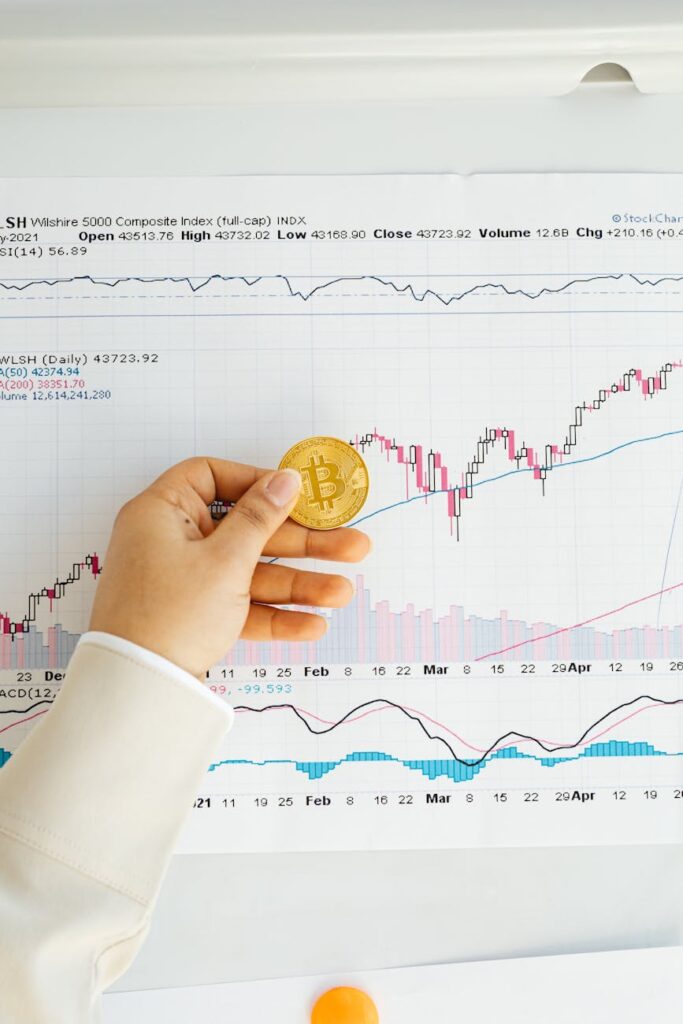If you’ve ever stared at a trading chart, you know it can feel like trying to read a foreign language. Squiggly lines, colorful bars, and a dozen different acronyms all vying for your attention. It’s a lot. But what if you could learn to understand the grammar of that language? That’s where technical indicators come in. They’re the tools that help us translate price action into potential trading decisions. The biggest challenge for many traders, however, isn’t just learning what these tools are, but understanding their fundamental nature. At the heart of this is the crucial difference between leading and lagging indicators, and getting it wrong can be a very expensive mistake.
Think of it like driving. A leading indicator is like your GPS predicting a traffic jam two miles ahead. It gives you a chance to change your route *before* you get stuck. A lagging indicator is like the traffic report on the radio telling you about the jam you’re already sitting in. It confirms your reality, but it’s a bit late to help you avoid it. Both pieces of information have value, but you need to know which one you’re looking at and how to use it. This guide is all about breaking down that distinction so you can build a more robust and responsive trading strategy.
Key Takeaways:
– Leading Indicators aim to predict future price movements. They are predictive but can give false signals. Examples include RSI and the Stochastic Oscillator.
– Lagging Indicators confirm trends that are already underway. They are more reliable but slower, meaning you might miss the beginning of a move. Examples include Moving Averages and MACD.
– The most effective strategies often combine both types: using a leading indicator to spot a potential opportunity and a lagging indicator to confirm it before entering a trade.
What Are Technical Indicators, Anyway?
Before we jump into the main event, let’s set the stage. What are these ‘indicators’ we keep talking about? In short, technical indicators are mathematical calculations based on an asset’s price, volume, or open interest. That sounds complicated, but it’s not. They’re just formulas that take historical market data and present it in a more digestible, visual way on your chart.
Their goal is simple: to help you make sense of the chaos. Are we in a strong trend? Is the momentum fading? Is the market overbought and due for a pullback? Indicators help us answer these questions with a bit more objectivity than just gut feeling alone. They are the backbone of technical analysis, providing signals and insights that can form the basis of a trading plan. But, and this is a big but, not all indicators are created equal. They fall into two main camps: the fortune-tellers (leading) and the historians (lagging).

Diving Deep: What Are Leading Indicators?
Leading indicators are the speed demons of the technical analysis world. They’re designed to get ahead of the curve, to anticipate where the price is headed before it makes a major move. They often achieve this by measuring the momentum or speed of price changes over a specific period. When momentum starts to slow down in an uptrend, for example, a leading indicator might signal that a reversal could be on the horizon, even while the price is still inching higher.
These are often called oscillators because their values fluctuate between defined levels, like 0 and 100. This oscillation helps traders identify potential overbought or oversold conditions. It’s like stretching a rubber band—a leading indicator tells you when the band is stretched to its limit and might be about to snap back.
The Good: The Power of Prediction
The primary advantage of leading indicators is obvious: early signals. By getting in on a trend or reversal at its inception, you have the potential for a much better entry price and, consequently, a larger profit. They are incredibly useful in markets that aren’t trending strongly—think sideways or ‘ranging’ markets. In these conditions, price bounces between support and resistance levels. Leading indicators excel at spotting the turning points within that range, signaling when to buy at the bottom and sell at the top.
The Bad: The Risk of False Signals
Here’s the catch. With great predictive power comes great responsibility… and a high chance of being wrong. Because leading indicators are trying to predict the future, they are notoriously prone to generating ‘whipsaws’ or false signals. The indicator might scream ‘SELL!’ only for the price to continue its relentless march upwards. This is especially true in very strong trending markets. The indicator might show ‘overbought’ for days or weeks, tricking you into selling way too early while the trend powers on without you. Relying solely on leading indicators is a recipe for getting chopped up by the market.
Popular Leading Indicators You Should Know
- Relative Strength Index (RSI): This is probably the most famous momentum oscillator. It moves between 0 and 100 and measures the speed and change of price movements. A reading above 70 is traditionally considered ‘overbought’ (a potential signal to sell), while a reading below 30 is ‘oversold’ (a potential signal to buy). The key is to look for RSI to enter these zones and then exit them as a signal.
- Stochastic Oscillator: Similar to RSI, the Stochastic Oscillator is a momentum indicator that compares a particular closing price of an asset to a range of its prices over a certain period. It also operates on a 0-100 scale, with readings over 80 considered overbought and below 20 considered oversold. It’s often seen as being more sensitive than RSI, providing more signals—which also means more potential false signals.
- Williams %R: Developed by the legendary trader Larry Williams, this indicator is the inverse of the Stochastic Oscillator. It moves between 0 and -100. Readings between 0 and -20 are overbought, and readings between -80 and -100 are oversold. It’s another tool for gauging whether a price move has gone too far, too fast.

Understanding the Other Side: What Are Lagging Indicators?
If leading indicators are the flashy fortune-tellers, lagging indicators are the wise, methodical historians. They don’t try to predict the future. Instead, their job is to confirm what has already started to happen. They move more slowly because they are based on past price data, effectively smoothing out price action to give you a clearer view of the underlying trend.
Think of it this way: price on a chart can be very ‘noisy’ day-to-day. A lagging indicator filters out that noise. It won’t get you in at the absolute bottom or out at the absolute top, but it will help you catch the ‘meat’ of a major move and, more importantly, help keep you from jumping in and out of trades based on insignificant market chatter.
The Good: The Confidence of Confirmation
The single biggest benefit of lagging indicators is reliability. Because they wait for the price to establish a clear direction, the signals they generate are generally more dependable and less prone to whipsaws than those from leading indicators. They are the gold standard for trend-following strategies. When a lagging indicator confirms a new trend, you can enter the trade with a higher degree of confidence that you’re on the right side of the market’s momentum. This can be a huge psychological advantage, preventing over-trading and second-guessing.
The Bad: The Agony of Being Late
The trade-off for that reliability is, well, a late trade. By definition, a lagging indicator is always behind the price. This means your entry signal will come after a significant portion of the move has already occurred. You’ll miss the first part of the trend. Similarly, your exit signal will come after the trend has already peaked and started to reverse. This means giving back some of your profits. For traders who can’t stand to miss the start of a move, using lagging indicators can be mentally taxing.
Common Lagging Indicators for Your Toolkit
- Moving Averages (MA): The quintessential lagging indicator. A Simple Moving Average (SMA) or Exponential Moving Average (EMA) calculates the average price of an asset over a specific number of periods. A rising MA indicates an uptrend, while a falling MA indicates a downtrend. A common strategy is to use two MAs—a short-term one and a long-term one—and look for a ‘crossover’. When the short-term MA crosses above the long-term MA, it’s a bullish signal (a ‘Golden Cross’), and when it crosses below, it’s a bearish signal (a ‘Death Cross’).
- Moving Average Convergence Divergence (MACD): This sounds complex, but it’s really just a more sophisticated way of looking at moving average crossovers. It consists of the MACD line, a signal line, and a histogram. When the MACD line crosses above the signal line, it’s a buy signal; when it crosses below, it’s a sell signal. It’s a fantastic tool for both trend confirmation and measuring momentum.
- Bollinger Bands: This indicator consists of a middle band (which is an SMA) and two outer bands that are standard deviations away from the middle band. The bands widen when volatility is high and contract when volatility is low. While they can be used to identify overbought/oversold levels (touching the upper/lower band), they are primarily a trend-following and volatility tool. In a strong uptrend, prices will consistently ‘ride’ the upper band.
Leading and Lagging Indicators: The Head-to-Head Showdown
So, we’ve met the two families. Let’s put them side-by-side to really hammer home the differences. It’s not about which one is ‘better’—it’s about understanding their distinct roles on your trading team.
Purpose: Prediction vs. Confirmation
This is the core difference. Leading indicators generate signals that anticipate a future move. They are forward-looking. Lagging indicators generate signals that confirm a move is already in progress. They are backward-looking. One tries to be a prophet; the other, a reporter.
Timing: Before vs. After the Fact
A leading indicator, like RSI hitting an oversold level, gives you a signal before the price has necessarily started its new uptrend. A lagging indicator, like a moving average crossover, gives you a signal after the price has already moved enough to pull the short-term average over the long-term one.
Best Use Cases: Ranging vs. Trending Markets
This is a critical point. Leading indicators shine in sideways, choppy, or ranging markets. They help you pick tops and bottoms within a defined channel. Using a lagging indicator in a ranging market will get you constantly chopped up, buying at the top and selling at the bottom. Conversely, lagging indicators are built for strong, sustained trending markets. They keep you in the trade and help you ride the wave. Using a leading indicator in a powerful trend will constantly give you premature exit signals, causing you to miss out on huge gains.
The Million-Dollar Question: How Do You Actually Use Them Together?
Okay, theory is great. But how does this make you a better trader? The answer isn’t to pick a side. The best traders don’t exclusively use one or the other. They use them in combination, creating a system of checks and balances.
The most powerful approach is to use a leading indicator to generate a potential trade idea and then use a lagging indicator for the final confirmation. This synergy is the key to filtering out bad trades and increasing your confidence.
A great strategy is like a one-two punch: The leading indicator spots the opening, and the lagging indicator delivers the knockout blow of confirmation.
Let’s walk through a hypothetical example:
- The Setup (Leading): You’re watching Bitcoin, and you see the price has been falling for a week. You look at your RSI and notice it has dropped below 30 into the ‘oversold’ territory. This is your leading signal. It’s an alert, not a command. It says, ‘Hey, the downward momentum is getting exhausted. A reversal *could* be coming soon.’
- The Trigger (Confirmation/Lagging): You don’t just blindly buy because RSI is oversold. That’s a rookie mistake. Instead, you wait. You watch the price and your lagging indicator, let’s say a MACD. A few days later, the price starts to flatten out and then ticks up. You see the MACD line cross above its signal line. That’s your confirmation. The leading indicator gave you the heads-up, and the lagging indicator confirmed that the trend had actually started to turn. Now you can place your buy order with much greater confidence.
By using this layered approach, you filter out the noise. You ignore the times RSI dips into oversold and the price just keeps on falling. You only act when both tools align, giving you a much higher probability of success.

Conclusion: Building Your Complete Toolkit
The debate of leading vs. lagging isn’t a battle to be won; it’s a relationship to be understood. Neither type of indicator is inherently superior. A hammer isn’t better than a screwdriver; they just have different jobs. Your job, as a trader, is to know when to reach for which tool.
Leading indicators are your scouts, venturing ahead to spot potential opportunities and dangers. They give you the gift of foresight. Lagging indicators are your heavy infantry, providing the confirmation and strength to act on those insights with conviction. By learning to make them work together, you move from simply reacting to chart wiggles to building a thoughtful, systematic approach to trading. So, stop looking for the one ‘perfect’ indicator and start building a well-rounded toolkit that leverages the predictive power of leading indicators with the reliable confirmation of their lagging counterparts. That’s how you turn noise into a signal.
FAQ
Can an indicator be both leading and lagging?
Not typically in its primary function, but some complex indicators can have elements of both. For example, Bollinger Bands are primarily lagging/trend-confirming. However, a trader might use a price touch of the outer bands as a leading signal for a potential mean-reversion trade (a fade). So, while the tool itself is lagging by nature, its *application* can be predictive. It’s more about how you interpret and use the indicator.
Which type of indicator is better for beginners?
Most experts would recommend that beginners start by mastering lagging indicators, specifically Moving Averages and the MACD. Why? Because they are designed for trend-following, and one of the most common pieces of advice for new traders is to ‘trade with the trend.’ Lagging indicators help instill this discipline. They are less noisy and can prevent a beginner from over-trading based on the many false signals that leading indicators can generate.
Do I need to use dozens of indicators on my chart?
Absolutely not! This is a common mistake called ‘analysis paralysis.’ A chart cluttered with ten different indicators is confusing and often provides conflicting signals. A more effective approach is to choose one or two leading indicators (like RSI or Stochastic) and one or two lagging indicators (like EMAs and MACD) that you understand deeply. Learn their nuances and how they work together. A clean chart with a few well-understood tools is far more powerful than a messy one you can’t read.


